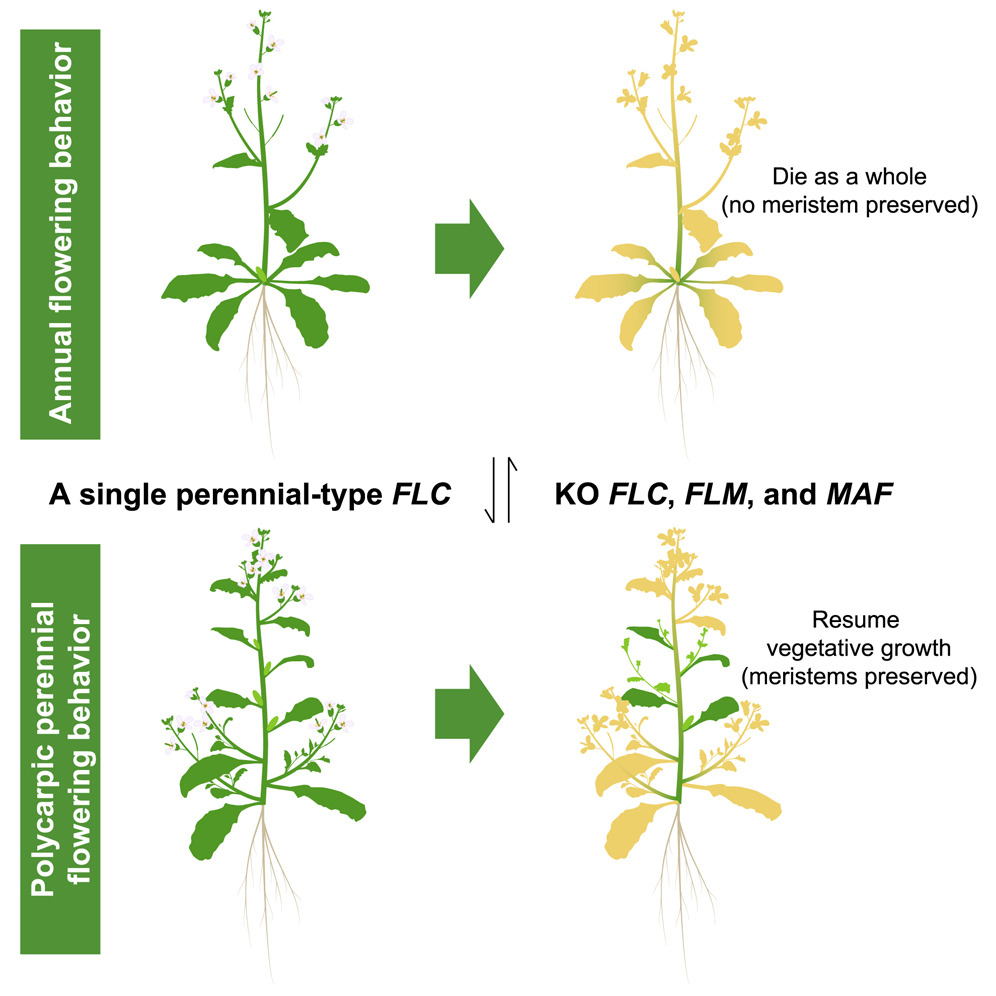
A single gene converts Brassicaceae from annual to perennial form
Plant Science Research WeeklyPolycarpic perennials, as opposed to annual plants, flower multiple times over several growing seasons throughout their lifecycle. To do that, they must retain a vegetative meristem that does not produce flowers during the reproductive phase. MADS-box transcription factors like FLOWERING LOCUS C (FLC)…

A novel BZR/BES transcription factor controls the development of haploid reproductive organs in Marchantia polymorpha
Plant Science Research WeeklyGametogenesis is essential for sexual reproduction. In bryophytes, lycophytes, and ferns, gametogenesis takes place in gametangia: antheridia for sperm production and archegonia for egg production. How these specialized reproductive organs develop at the molecular level remains unclear. Furuya et al.…
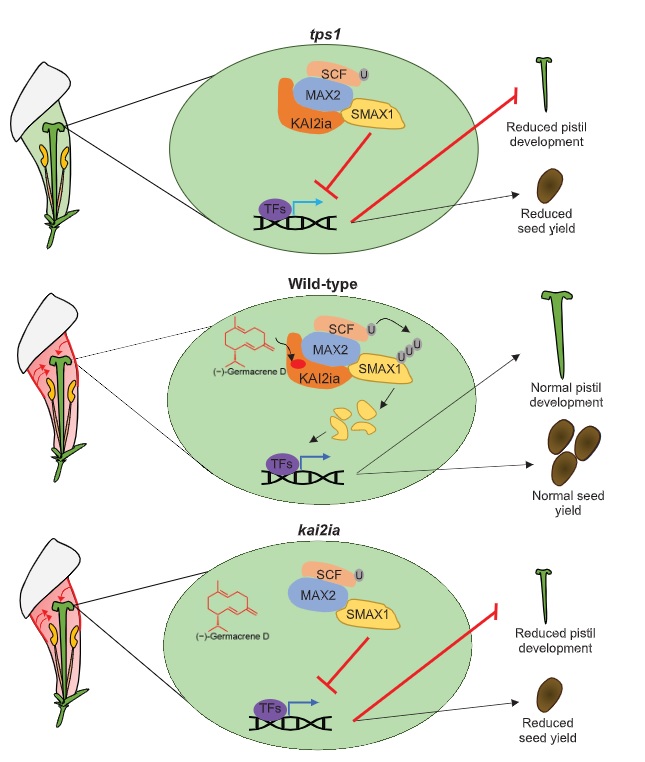
Volatile communication in plants relies on a KAI2-mediated signaling pathway
Plant Science Research WeeklyWhile it is recognized that plant communication, both within and between plants, can be achieved through emission and perception of volatile organic compounds (VOCs), it is unclear exactly how these signals are perceived and transmitted. Stirling et al. tease apart the components of within-plant VOC…
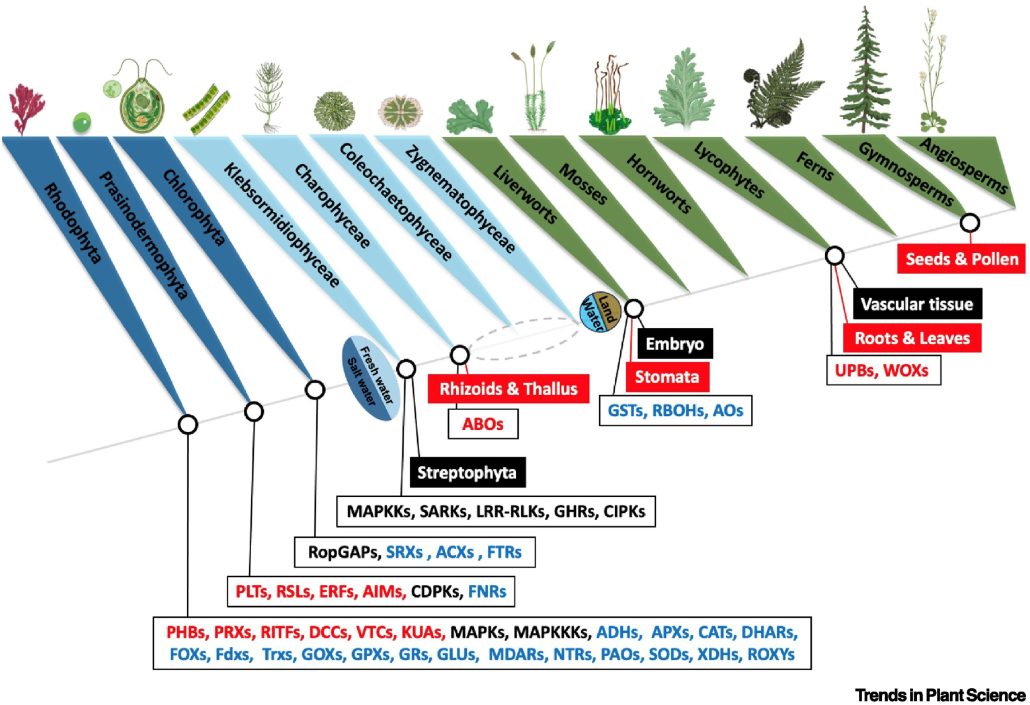
Review: Evolution of ROS targets for plant development
Plant Science Research WeeklyReactive oxygen species (ROS) are agents of damage but also potent signals. Here, Singh et al. review the cellular targets that support ROS signaling across the green kingdom. Many of the signaling roles for ROS have been uncovered in Arabidopsis and other angiosperms, so it is interesting to look at…
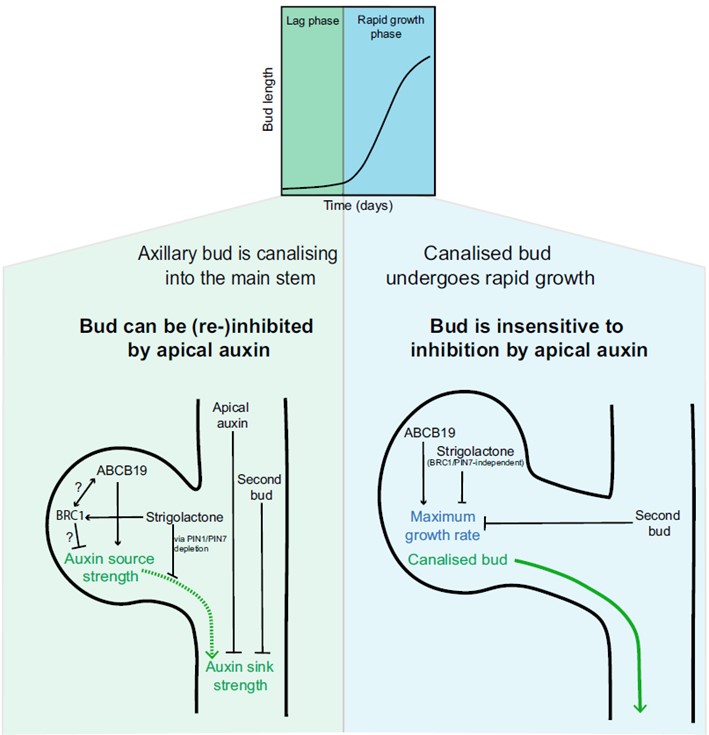
Lag, then leg it! An updated two-phase model for axillary bud activation and outgrowth in Arabidopsis
Plant Science Research WeeklyThe mechanisms of apical dominance and bud outgrowth have puzzled generations of plant scientists, and over a century various hypotheses have been scrutinized. Two main hubs of regulation – auxin canalization (movement of auxin from a bud into the main stem) and the branching transcription factors…
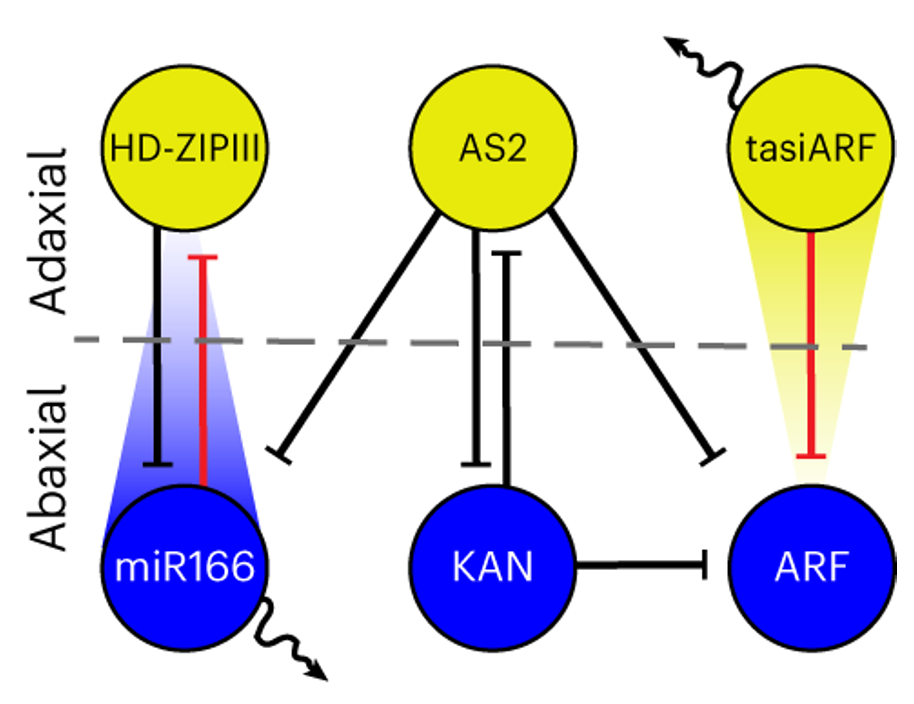
A diffusible small-RNA-based Turing system dynamically coordinates organ polarity
Plant Science Research WeeklyThe establishment of adaxial-abaxial polarity during the growth of the leaf primordium is a prerequisite for the formation of the flat, thin leaves observed in most (but not all) plants. The micro-RNAs tasiARF and miR165/6, which form concentration gradients within leaf primordia, are major contributors…
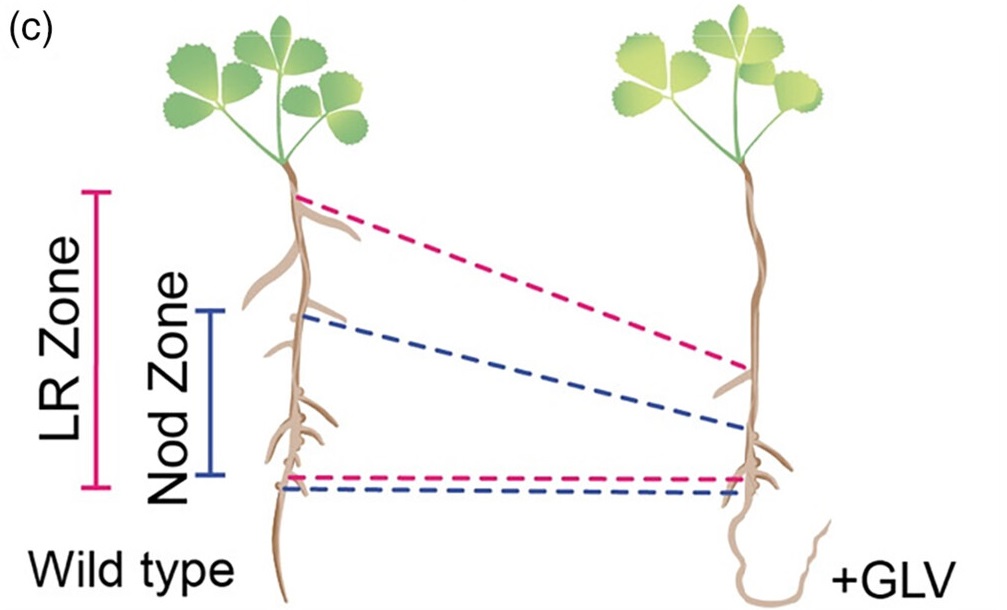
Peptide GOLVEN10 alters root development and noduletaxis
Plant Science Research WeeklyFor many years, biologists argued about whether plants have peptide hormones like animals have, and ever since it was first shown that plant peptides do have hormone-like functions, I’ve said a little cheer as new functions are discovered (Yay plants!). A few years ago, Sonali Roy and colleagues wrote…
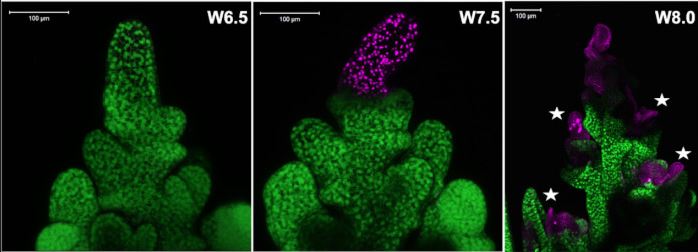
Examining apical floral decline in the indeterminate inflorescence apex of barley
The Plant Cell: In a NutshellShanmugaraj et al. used spatiotemporal multi-omics studies to elucidate the mechanism of apical degeneration of barley inflorescence meristem and proposes a molecular framework behind this process, the manipulation of which may increase yield in barley and other related cereals.
Nandhakumar Shanmugaraj1,…

Review: Development of organs for nutrient uptake in parasitic plants and root nodule symbiosis
Plant Science Research WeeklyThis review by Cui et al. makes the interesting comparison between the developmental processes involved in root nodule formation and haustoria formation by roots of parasitic plants. As the authors observe, both are organs that are produced for the purpose of nutrient acquisition through “intimate…

